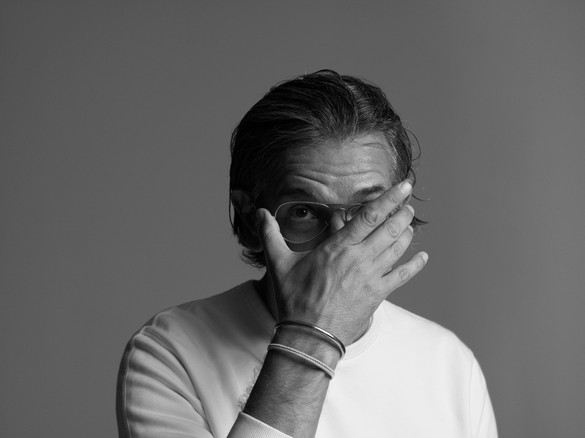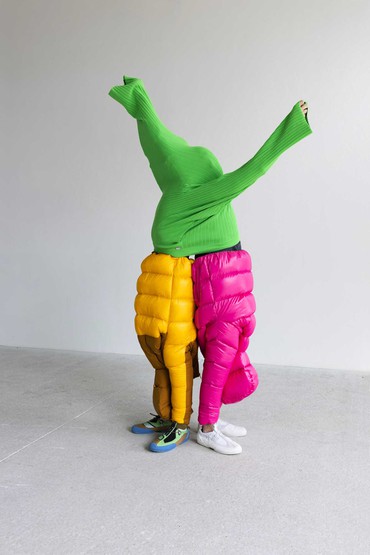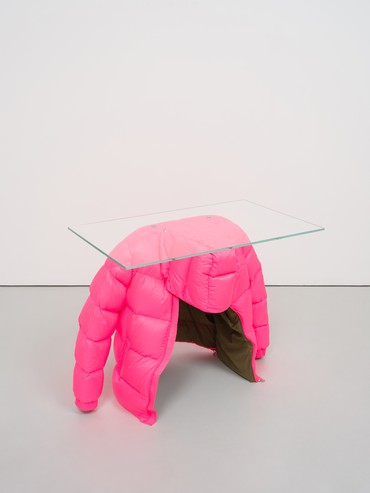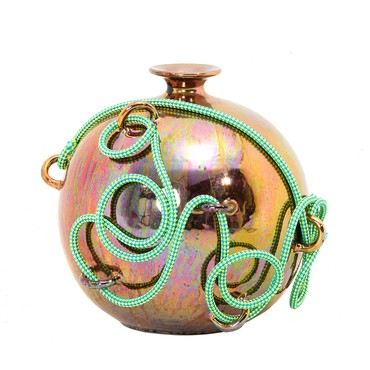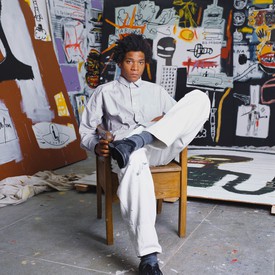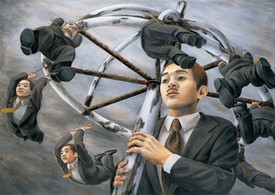
Wyatt Allgeier is a writer and an editor for Gagosian Quarterly. He lives and works in New York City.
Wyatt AllgeierSergio, when did art and design become key aspects of your life?
Sergio ZambonI was always interested in the creative processes that went into projects of any kind. I’ve specifically been interested in art since high school. Then I did what we call in Italy liceo artistico (art high school). I remember being obsessed at the time with Andy Warhol and Victor Vasarely, with Pop art and Op art.
But what I was really obsessed with was the process of doing a project in general. My first interest was in architecture and urban planning. I studied architecture at the University of Rome for a year, before I left for design school in Milan and Rome.
In all of my creative endeavors, contemporary art has always been a reference. But before now I never really looked at it explicitly in those terms; I just continued following this interest while growing in my studies and in my work.
WAWould you say collaboration is part of the draw, the appeal of a project for you?
SZOh, yes. I think nowadays, especially in the way I work, collaboration brings strength to a project. I start from a vision and then I go into the details and the layers of reference, which can be as diverse as climatology and industrial design. When people bring different, even opposite, references and styles to a project, it becomes very rich.
Collaborating, for me, is kind of a natural thing. When I was at Fendi menswear and at Acne Studios, I worked with different graphic artists. And then here at Moncler is where I really developed the collaboration concept: from the start, I collaborated with graphic artists and brands, and then after two seasons I launched the first Moncler Genius collection and developed this formula of collaborating with different cities through brands or creative individuals.
I have a little list now of brands and graphic artists I’ve worked with. For example, one graphic artist I’ve collaborated with is Fergus Purcell. The brands I’ve collaborated with include And Wander, Awake, Undefeated.
The Moncler Genius project I’m doing now is called 2 Moncler 1952 M, and it’s a collection of thirty-five outfits.
WASo this current iteration of Moncler Genius 1952 M includes a collaboration with Andrea Anastasio, Erwin Wurm, and Prem Sahib. How did you learn about these artists and what about their work drew you to them?
SZWell, as my interest is in contemporary art, this season I wanted to do an event for Moncler that’s similar, without being too pretentious, to a Venice Biennale installation—more than a fashion presentation. So I looked at artists I know or I like and who, in a way, already have something linked with the world of Moncler. I chose these three artists for a reason: they all visually have something related to the styles of Moncler. The idea was for them to use the colors and fabrics of Moncler as the building blocks for new works. In fact, Prem used a jacket from the 2 Moncler 1952 M collection, which will be included in his pieces. All of the fabrics and the colors used by Andrea were chosen from the current collection. With Erwin, the color of his work comes from a pink Moncler puffer jacket, and he additionally shot some of his iconic pictures with the collection.
WACould you describe how they are going to be presented?
SZThe one-day exhibition, titled Instant Message, is going to be presented at Stazione Centrale, which is a place I like very much in Milan. It’s imbued with this sense of taste from the 1930s. It’s huge and has frescoes, and the work will be exhibited in a very clean, minimal atmosphere. Each artist will have their own space.
WAAnd then the artworks themselves are going to be sold, I understand, with the proceeds going to the organization The Film Path?
SZYes. A friend of mine, a costume designer in LA, founded this association, which works to set in motion equity, inclusion, and empowerment for Black, indigenous, people of color, and transgender crew members in the film industry. This mission was very close to me in every sense, and it felt natural for Moncler to support them.
WAIs there anything you can reveal about what the three artists are making, or is that still secret?
SZOh, no, I can’t reveal more [laughs]! Well, maybe a little . . . Prem’s work, Puffer Table, is about minimal design and clubbing. He designed three desks. Each one is in glass and under it, there is a signature Moncler duvet down jacket, which is kind of the base of the desk. So it’s a reinterpretation of the Allen Jones desk in a very outerwear, sports-y way.
For a work called Alta Quota, Andrea did a series of vases with metallic finishing bound by mountaineering cords, which are similar to a style of jacket I made with tracking cords. And then he crafted another set of furniture pieces, which are from his series called Pillow. There are benches and stools with cushions of different Moncler fabrics and colors.
Erwin creates kind of exploded, padded cars. He will present one of them, Fat Mini, the English car, in the playful pink Moncler puffer fabric I mentioned, as well as a couple of pictures paired with the collection.
WAIt sounds incredible. A whole car?
SZYes.
WA[Laughs] That’s crazy. Fantastic.
Photos: courtesy Moncler
